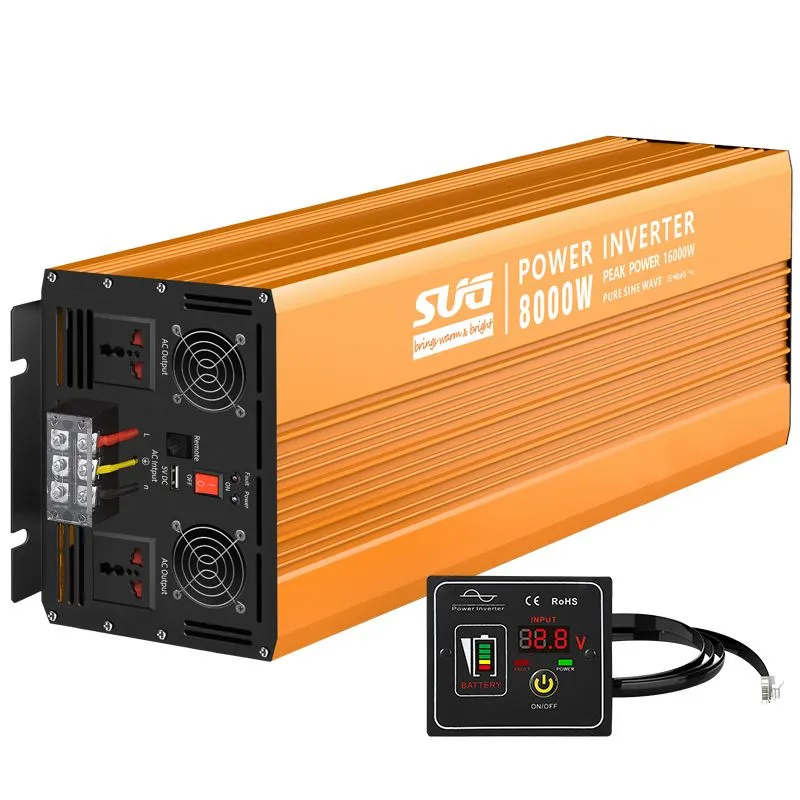Understanding the Benefits of On-Grid Solar Inverters for Sustainable Energy Solutions
On-Grid Solar Inverters Revolutionizing Renewable Energy
In recent years, the importance of renewable energy sources has gained significant attention worldwide. Among these, solar energy stands out as one of the most popular and accessible options for generating clean and sustainable power. Central to harnessing solar energy effectively are on-grid solar inverters, which play a crucial role in converting solar energy into usable electricity. This article delves into the functionality, benefits, and challenges associated with on-grid solar inverters.
Understanding On-Grid Solar Inverters
An on-grid solar inverter, also known as a grid-tied inverter, is a vital component of a solar photovoltaic (PV) system. Unlike off-grid systems that store energy in batteries, on-grid systems are directly connected to the electricity grid. The primary function of an on-grid solar inverter is to convert the direct current (DC) generated by solar panels into alternating current (AC) so that it can be fed into the electricity grid.
When sunlight hits the solar panels, it generates DC electricity. The inverter then transforms this DC electricity into AC electricity, which is compatible with the electrical systems used in homes and businesses. This AC electricity can either be consumed on-site, powering appliances and electronic devices, or sent back to the grid. In many regions, this process allows homeowners to receive credits or compensation for the surplus energy they supply to the grid.
Benefits of On-Grid Solar Inverters
1. Cost-Effectiveness On-grid solar inverters offer a relatively low-cost option for solar energy systems. Since they do not require batteries for energy storage, which can be expensive, the overall system costs are significantly reduced. This makes solar energy more accessible to a broader audience.
2. Grid Connection One of the key benefits of on-grid systems is their seamless connection to the electricity grid. This connection allows users to draw electricity from the grid when their solar panels are not producing enough energy, such as during cloudy days or at night.
on grid solar inverter

3. Net Metering Many regions implement net metering policies, which enable homeowners to receive credits for the excess electricity they produce and send back to the grid. This not only offsets their utility bills but also encourages the development of renewable energy.
4. Efficiency and Reliability On-grid solar inverters are designed for high efficiency, often achieving conversion rates above 95%. This means that a large percentage of the solar energy harvested is converted into usable electricity. Additionally, on-grid systems benefit from professional grid maintenance, ensuring a stable and reliable energy supply.
5. Environmental Impact By utilizing solar energy, on-grid inverter systems contribute significantly to reducing greenhouse gas emissions and mitigating climate change. The shift towards renewable energy sources fosters a sustainable energy future.
Challenges of On-Grid Solar Inverters
While on-grid solar inverters come with numerous advantages, they do have some challenges. One major concern is their dependency on the grid. In the event of a power outage, on-grid systems automatically disconnect from the grid to ensure safety and prevent back-feeding electricity. This means that homeowners cannot use their solar energy during blackouts unless they have an additional backup battery system.
Furthermore, the performance of solar panels is significantly influenced by weather conditions. Cloudy days and seasonal variations can affect the amount of electricity generated, which may require supplementary energy from the grid.
Conclusion
On-grid solar inverters are pivotal in advancing renewable energy utilization and optimizing solar energy consumption. Their cost-effectiveness, efficiency, and environmental benefits make them an attractive choice for homeowners and businesses alike. While challenges exist, the ongoing development in solar technology and grid infrastructure continues to enhance the viability of on-grid systems. As governments and communities focus on sustainable development, on-grid solar inverters will undoubtedly play a central role in this energy transition, steering society towards a greener and more sustainable future.
-
String Solar Inverter: The High-Efficiency Solution for Smart Solar EnergyNewsJul.14,2025
-
Revolutionizing Rooftop Energy with the Power of the Micro Solar InverterNewsJul.14,2025
-
Power Independence with Smart Off Grid Solar Inverter SolutionsNewsJul.14,2025
-
On Grid Solar Inverter: Powering the Future with Smart Grid IntegrationNewsJul.14,2025
-
Monocrystalline Solar Panels: High-Efficiency Power for the Future of Clean EnergyNewsJul.14,2025
-
Bifacial Solar Panel: A Smarter Investment for Next-Generation Energy SystemsNewsJul.14,2025







